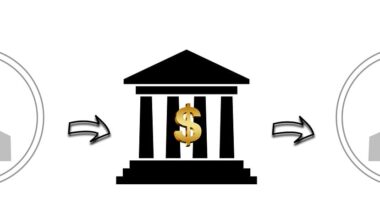Monetary Policy Data Analysis: Opportunities and Limitations
Monetary policy data analysis serves as a fundamental tool for central banks aiming to understand and influence economic conditions. The analysis of monetary data allows policymakers to track indicators like interest rates, inflation, and employment levels, leading to data-driven decisions that promote economic stability. By utilizing sophisticated models and statistical tools, central banks can assess the effectiveness of existing monetary policies and forecast future economic trends. These methodologies provide insights into how changes in policy can impact variables such as spending and investment, ultimately guiding the economy toward desired outcomes. The correlation between monetary policy actions and their effects on the broader economy underscores the necessity of rigorous data analysis. Moreover, through investigating the nuances of monetary data, policymakers can identify areas where adjustments may be necessary. It is important to recognize, however, the limitations inherent in data analysis. Data can sometimes provide conflicting signals; thus, comprehensive assessments must consider the broader economic context. Overall, successful monetary policy hinges on the meticulous analysis of data, establishing a solid foundation for informed economic decisions and actions.
Opportunities in Monetary Policy Data Analysis
Monetary policy data analysis presents numerous opportunities for enhancing economic decision-making. For instance, advanced analytics may reveal emerging trends and potential economic shifts that policymakers may not immediately recognize. By examining various monetary indicators, economists can establish correlations between policy decisions and economic outcomes, helping to craft more effective monetary strategies. Furthermore, by utilizing robust data sets, policymakers can conduct historical comparisons to evaluate the long-term effects of policy changes. Leveraging machine learning and predictive modeling techniques allows for an improved understanding of complex interactions among economic variables, offering insights that were previously unattainable. Additionally, real-time data analysis can facilitate quicker responses to unfolding economic events, enabling central banks to adjust policies dynamically, minimizing adverse impacts on society. Engaging in collaborative efforts with universities and research institutions can foster innovative approaches to data analysis, enhancing the overall effectiveness of monetary policy. While the rise of big data presents a myriad of possibilities, it remains imperative for economists to ensure that the data’s integrity and subsequent interpretations are robust. Thus, embracing new technologies while adhering to rigorous standards is crucial for successful analysis.
Effectively analyzing monetary policy data also requires a clear understanding of data limitations. Although robust data analysis can provide significant insights, it is essential to recognize areas where data may fall short of expectations. Data collection processes may be subject to biases or inaccuracies, especially when dealing with subjective indicators like consumer sentiment. Moreover, economic models are inherently simplifications of reality, often omitting critical aspects. These limitations can give rise to interpretations that do not reflect true economic conditions, potentially misleading policymakers. Another challenge pertains to data availability; some relevant data may be lagging and impede timely forecasting. Therefore, data analysis must incorporate a critical perspective, acknowledging these limitations. Policymakers should not solely rely on quantitative data but also consider qualitative inputs from market participants and expert opinions. Engaging with diverse stakeholders through interviews or surveys can provide invaluable information that augment data analysis. Additionally, sensitivity analysis may help in identifying how different assumptions can affect outcomes. Ultimately, recognizing and addressing the limitations of data analysis equips policymakers with a more rounded understanding of the economic environment.
Importance of Flexibility in Policy Responses
Flexibility in monetary policy responses emerges as an essential component for navigating economic uncertainties. Data analysis plays a crucial role in recognizing when such flexibility is necessary. As economic conditions evolve, the ability to adjust monetary policy becomes vital in effectively managing inflation, employment, and growth. Rigid approaches may lead to detrimental impacts that could exacerbate economic challenges. Conversely, adapting policies based on timely data insights allows policymakers to maintain a proactive stance. For instance, during unforeseen economic shocks, such as financial crises, a reactive stance driven by real-time data analysis can lead to more effective interventions. The ability to integrate findings from data analysis with investments in economic forecasting can yield insightful conclusions, guiding timely policy adjustments. Consequently, collaboration between economists who analyze the data and policymakers implementing changes is crucial to ensure that monetary policy is well-informed and responsive. Moreover, the dynamic nature of global economic interactions underscores the importance of continuous data monitoring. This practice allows policymakers to anticipate external factors influencing their economies. In conclusion, flexibility, informed by thorough data analysis, remains indispensable for effective monetary policy.
In addition to flexibility, transparency in monetary policy data analysis fosters greater trust and accountability among stakeholders. When central banks openly share methodologies, data sources, and analytical techniques, it cultivates a deeper understanding of their decision-making processes. Transparency not only demystifies the actions of monetary authorities but also enhances public confidence in economic policies. Increased trust may lead to improved economic stability, as market participants align their expectations with central bank communications. Additionally, transparent data analysis encourages productive discussions and debates among economists, creating an environment where ideas can be exchanged freely. This collaborative atmosphere can yield innovative approaches to monetary policy challenges, as different perspectives come together to analyze complex data sets. Similarly, engaging with media and public forums allows for the dissemination of information related to monetary policy objectives and outcomes, further enhancing transparency. However, achieving transparency may necessitate a careful balancing act, as not all information should be disclosed to avoid creating market volatility. Thus, while striving for openness, central banks must also judiciously guard sensitive information. Ultimately, a commitment to transparency paves the way for informed decision-making and stronger accountability.
Technological Innovations in Data Analysis
Technological innovations significantly advance the capabilities of monetary policy data analysis. The integration of artificial intelligence and machine learning enables much more sophisticated analyses than conventional methods. These technologies can automate data processing, allowing economists to focus on interpreting complex patterns and trends that may influence monetary policy. For instance, machine learning algorithms can analyze vast datasets to identify correlations and causations that would be challenging for humans to discern alone. Additionally, forecasting tools underpinned by advanced technology offer higher accuracy, leading to more informed policy decisions. Predictive analytics not only facilitate traditional economic forecasting but also enhance monitoring of economic conditions, allowing for real-time assessments. Furthermore, data visualization tools help to present intricate data in a comprehensible manner, making it easier for policymakers and the public alike to understand monetary policy maneuvers. Nevertheless, while technological advancements hold immense potential, they come with challenges, such as ensuring data privacy and security. Continuous development of ethical guidelines surrounding the use of technology in monetary analysis is crucial. Ultimately, these innovations can enhance the efficacy of monetary policy, but they must be combined with a thorough understanding of existing frameworks and market conditions.
In conclusion, monetary policy data analysis provides both opportunities and limitations that central banks must navigate judiciously. The opportunities presented by advanced methodologies and technologies enable more informed decision-making, ultimately contributing to economic stability. Nonetheless, policymakers must remain aware of inherent data limitations and biases, ensuring interpretations are grounded in reality. Flexibility in responding to economic shifts, supported by real-time data insights, stands as a vital element for effective monetary governance. Transparency and public engagement bolster trust in monetary policies, creating a climate of increased accountability. Furthermore, while technological innovations greatly enhance data analytical capabilities, their integration should be approached with caution, weighing potential risks against benefits. Continuous collaboration between economists and policymakers is essential to leverage data effectively while safeguarding public interests. Embracing a comprehensive approach to monetary policy, which focuses equally on qualitative and quantitative inputs, can strengthen the foundation of economic governance. The future of monetary policy will undoubtedly hinge on how well these data analysis opportunities and limitations are managed, creating resilient and adaptable economic frameworks.
Finally, the alignment of monetary policy with robust data analysis encourages collaborative discussions among various stakeholders. Central banks, governments, and private sector economists stand to benefit from sharing insights and analyses to build more comprehensive monetary frameworks. By creating platforms for dialogue, stakeholders can address pressing economic challenges collectively, emphasizing data-driven approaches. Such collaboration can yield multifaceted solutions that consider diverse perspectives, enhancing policy responses. Furthermore, engaging with international organizations allows central banks to compare their approaches and gain insights into global best practices. This sharing of knowledge can play a significant role in refining data analysis methodologies, making them more effective for specific contexts. Joint initiatives can also contribute to empirical validation of economic theories, potentially steering reforms that could enhance economic resilience. As the world becomes increasingly interconnected, addressing issues such as inflation and financial crises necessitates unified, cooperative efforts. Circling back to data analysis, fostering partnerships can create a pool of collective intelligence that informs better policies. Ultimately, data is the cornerstone of effective monetary policy; utilizing it collaboratively ensures that decisions are robust, informed, and reflective of the interconnected economic landscape.


